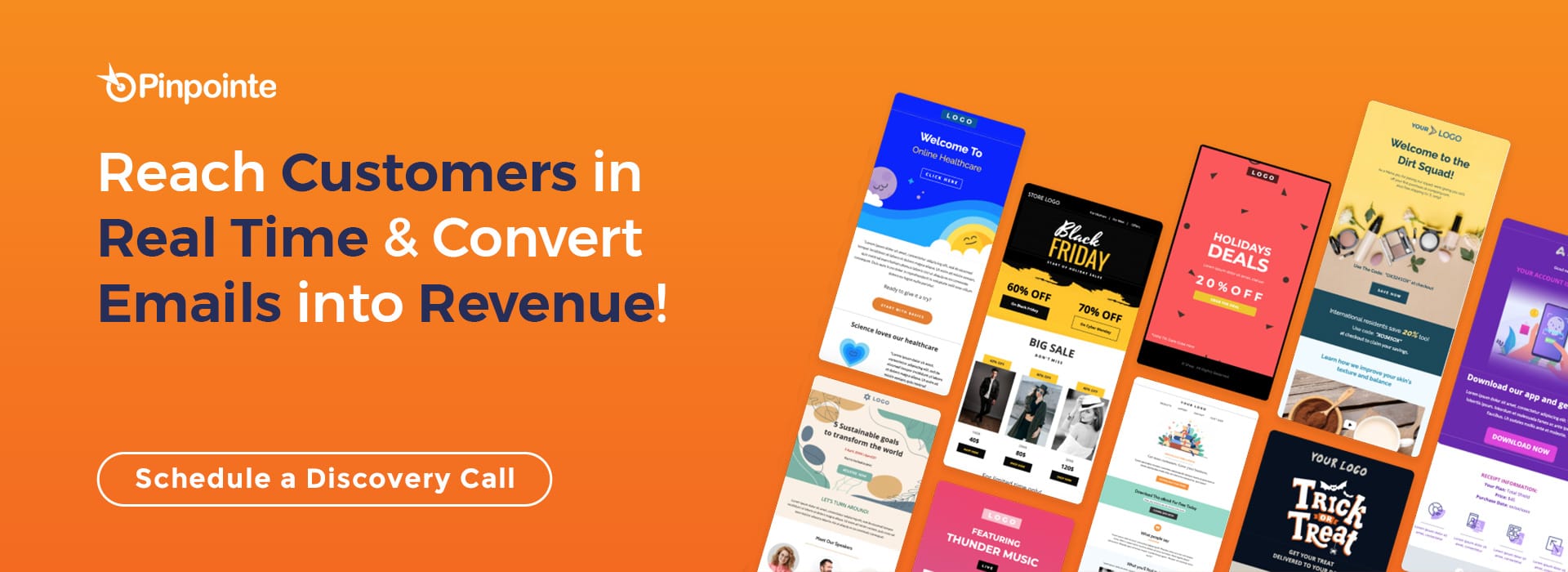
Improving Email Etiquette for Enhanced Marketing Results: 16 Rules to Follow
Table of Contents
Communication is entirely changed in the modern era and the initial impressions are often formed through electronic communication, understanding and adhering to proper email marketing etiquette is paramount. A single misstep could lead to your emails being relegated to the junk folder or, worse, alienating potential customers and prompting them to seek out alternative businesses. For small business owners, maintaining regular communication with customers is essential, and an effective email marketing strategy is one of the best ways to enhance awareness, conversion rates, and customer retention.
To ensure that every email you send resonates positively with your target audience, it's crucial to observe the following 16 rules of email etiquette:
Avoid Using All Caps
Capitalization serves to highlight important points but overusing all caps can be perceived as shouting, potentially alienating your audience. It's prudent to exercise restraint and reserve caps lock for instances requiring significant emphasis. By avoiding excessive capitalization, you maintain a professional and considerate tone in your communication.
Striking the right balance ensures your message is effectively conveyed without overwhelming or offending your recipients. Remember, moderation is key in employing capitalization for emphasis in email communication.
Use Exclamation Points Sparingly
While exclamation points can convey excitement, their overuse may appear insincere or overly enthusiastic. Restricting yourself to one exclamation point per email helps maintain a balanced tone and prevents misinterpretation. By exercising moderation, you ensure your enthusiasm is genuine and your message is well-received.
Strive for clarity and authenticity in your communication, refraining from excessive punctuation that may dilute your intended meaning. Remember, subtlety often yields more impactful results than excessive exclamation.
Exercise Restraint with Formatting
Utilizing bold, italics, and underline styles can certainly highlight crucial points, but an overabundance of formatting risks overwhelming and distracting your audience. Opt for a more measured approach, employing formatting sparingly and only when truly necessary.
This ensures that your message remains clear and easily digestible, fostering sustained engagement and comprehension. Remember, the key lies in finding the right balance between emphasis and readability, where simplicity often yields the most impactful results.

Mind Your Tone
Your email communications embody your brand's image, underscoring the need for a consistently positive and professional demeanor. Eschew negativity in language and endeavor to reframe any potentially adverse messages in a more constructive manner. By maintaining a positive tone throughout, you uphold the integrity of your brand and foster a more favorable impression among recipients.
Remember, the language you employ shapes perceptions, making positivity a powerful asset in your email communication arsenal.
Keep Messages Clear and Concise
Research indicates that email communication frequently results in misinterpretation, causing confusion among recipients. To mitigate this, prioritize clarity, conciseness, and the elimination of unnecessary jargon or ambiguity in your messages. By adhering to these principles, you enhance comprehension and minimize the risk of misunderstanding.
Clarity is paramount in effective communication, ensuring that your intended message is accurately conveyed and understood by recipients. Strive for simplicity and precision to optimize the effectiveness of your email correspondence.
Use Humor Judiciously
Humor, though potentially engaging, is subjective and may not resonate with all recipients. Exercise caution when incorporating humor into emails, particularly if you're unfamiliar with the recipient's preferences. Humor's effectiveness can vary greatly depending on individual tastes, making it essential to tread carefully to avoid potential misunderstandings or offense.
Prioritize sensitivity and discretion in your communication to maintain professionalism and respect for diverse perspectives. Recognize the inherent risks associated with humor in email correspondence, ensuring that your messages are inclusive and appropriate for all recipients.
Avoid Slang
Surprisingly, recent surveys reveal a strong aversion to slang usage in emails, particularly among younger demographics. With over 40 percent of respondents aged 18-24 deeming slang "totally unacceptable," it's clear that maintaining a professional tone is crucial, even in casual communications. Therefore, it's prudent to reserve informal expressions like "BRBs" and "TTYLs" for more appropriate platforms like texting, ensuring your emails remain professional and respectful.

You can maintain professionalism and uphold the integrity of your communication. Exercise discretion and awareness of your audience's expectations to ensure your emails are received positively and respectfully.
Keep Salutations Professional
Ensure your email greetings exude respect by employing straightforward and formal salutations like "hello" or "good morning." Address recipients by their preferred names, refraining from using unauthorized shortened versions or nicknames. Maintaining a respectful tone in your email greetings fosters a professional atmosphere and demonstrates consideration for recipients' preferences.
Avoiding casual or overly familiar language reinforces professionalism and ensures your communications are received positively. These guidelines enhance the overall tone of your emails and promotes respectful interactions with recipients.
Close Respectfully
Conclude your emails with a courteous sign-off, like "sincerely" or "thank you," to leave a positive impression on recipients. Including relevant contact information ensures recipients can easily reach out to you if necessary, fostering effective communication. A polite sign-off demonstrates professionalism and leaves recipients with a favorable impression of your email etiquette. Providing contact details facilitates further interaction and encourages recipients to engage with you if they have any inquiries or feedback.
Ensure Mobile Compatibility
Given the widespread use of smartphones for email access, it's crucial to prioritize mobile-friendliness in your email design. Avoid using special fonts or emojis that may not display correctly on mobile devices, ensuring a seamless viewing experience for all recipients. Optimizing your emails for mobile helps you demonstrate your commitment to accessibility and user satisfaction.

Neglecting mobile compatibility could result in distorted layouts or difficulty reading content, potentially leading to disengagement from your audience. Prioritizing mobile-friendliness is key to maximizing the impact and effectiveness of your email campaigns
Provide Valuable Content
Instead of inundating recipients with relentless sales pitches, prioritize delivering valuable content that resonates with their interests. Utilize list segmentation to personalize your messages, ensuring they address the unique needs and preferences of each recipient. Focus on providing relevant information and initiating meaningful conversations, establish credibility and foster stronger connections with your audience. Ultimately, tailoring your communication strategy to prioritize value over promotion can yield more impactful and sustainable results in your email marketing efforts.
Limit Email Frequency
Achieving the right balance in email frequency is crucial to prevent overwhelming your audience and risking email fatigue. Carefully assess your business needs and audience preferences to determine the optimal email frequency. By striking this balance, you can effectively maintain visibility and engagement without inundating recipients with excessive emails.
This approach demonstrates respect for your audience's time and attention while ensuring that your messages remain impactful and well-received. Monitoring engagement metrics and soliciting feedback can further refine your email frequency strategy, ultimately enhancing the overall effectiveness of your email marketing campaigns.
Keep Subject Lines Concise
Crafting concise and intriguing subject lines is key to optimizing email open rates. Research suggests that subject lines of around 50 characters tend to perform best, capturing recipients' attention without revealing too much information prematurely. This would help you to pique curiosity and incentivize recipients to open the email to learn more.
Avoid overly lengthy subject lines ensures optimal visibility across various email platforms and devices. Experimenting with different subject line lengths and monitoring their impact on open rates can help refine your email marketing strategy for maximum effectiveness.
Proofread Thoroughly
Prioritize the quality of your email communications by conducting thorough proofreading and editing processes. Scrutinize your messages for any grammatical, spelling, or punctuation errors that could detract from your professionalism. Additionally, ensure all links included in the email are functional and lead to the intended destination.

Dedicate time to these important checks, you can uphold a polished standard in your email correspondence, enhancing your credibility and fostering positive recipient impressions.
Respond Promptly
Demonstrate your commitment to effective communication by promptly addressing incoming emails, aiming to respond within a 24-hour timeframe. If unable to provide a comprehensive response immediately, acknowledge receipt of the email to reassure the sender of its delivery. Communicate a timeline for when they can anticipate a more thorough reply, ensuring transparency and managing expectations.
Use Email Features Wisely
Exercise discretion when employing email features like Reply All, CC, and BCC, tailoring their usage to suit the context of the email conversation and the privacy considerations of the recipients involved. Reserve Reply All for discussions pertinent to all recipients, utilize CC judiciously to include individuals who require specific information, and employ BCC sparingly, particularly for mass emails or when confidentiality is paramount. This would maintain clarity and relevance in your email communications while respecting the privacy and preferences of your audience.
Conclusion
In conclusion, we can say that if you follow these best practices for email etiquette is paramount for optimizing the impact of your email marketing endeavors. By consistently upholding a professional tone, delivering valuable content, and honoring the preferences of your audience, you not only bolster your brand's reputation but also cultivate deeper connections with your recipients. Remember, if time constraints are a concern, get a demo of customer engagement tool Pinpointe to streamline your email marketing workflow, freeing up valuable resources to concentrate on other essential aspects of your business. With its advanced features and intuitive interface, Pinpointe empowers you to create personalized, targeted campaigns that resonate with your audience, driving higher engagement and conversion rates.

Pinpointe Newsletter
Join the newsletter to receive the latest updates in your inbox.


